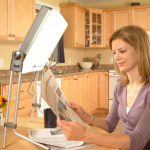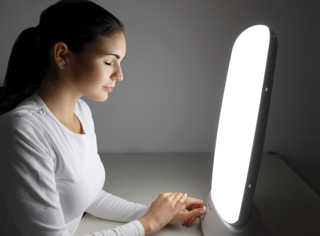What Is Huntington’s Disease?
Huntington’s Disease is a devastating disease that currently has no cure. It is a complex neurological genetic disorder that causes motor, cognitive, and psychiatric symptoms. It is caused by a hereditary gene defect that damages specific nerve cells in the brain. This is a progressive disease. The symptoms and damage progressively worsen over time. The disease can affect movement, cognition, which is perception, awareness, thinking and judgement, as well as behavior. The disease ends with a loss of motor and executive function. It is extremely heart wrenching and difficult for anyone involved.
The Symptoms…
The symptoms for Huntington’s Disease vary depending on the person. While each victim ultimately ends up with the same symptoms, the first symptoms to appear can vary. Throughout the course of the disease, some symptoms appear to have a more dominant effect than others. Movement, cognitive, and psychiatric disorders appear in each victim. MayoClinic, a website dedicated to answering all of our medical questions and needs, wrote a piece on Huntington’s Disease. They accurately described the symptoms by writing,
Movement disorders
The movement disorders associated with Huntington’s disease can include both involuntary movements and impairments in voluntary movements:
- Involuntary jerking or writhing movements (chorea)
- Muscle problems, such as rigidity or muscle contracture (dystonia)
- Slow or abnormal eye movements
- Impaired gait, posture and balance
- Difficulty with the physical production of speech or swallowing
- Impairments in voluntary movements — rather than the involuntary movements — may have a greater impact on a person’s ability to work, perform daily activities, communicate and remain independent.
Cognitive disorders
Cognitive impairments often associated with Huntington’s disease include:
- Difficulty organizing, prioritizing or focusing on tasks
- Lack of flexibility or the tendency to get stuck on a thought, behavior or action (perseveration)
- Lack of impulse control that can result in outbursts, acting without thinking and sexual promiscuity
- Lack of awareness of one’s own behaviors and abilities
- Slowness in processing thoughts or ”finding” words
- Difficulty in learning new information
Psychiatric disorders
The most common psychiatric disorder associated with Huntington’s disease is depression. This isn’t simply a reaction to receiving a diagnosis of Huntington’s disease. Instead, depression appears to occur because of injury to the brain and subsequent changes in brain function. Signs and symptoms may include:
- Feelings of irritability, sadness or apathy
- Social withdrawal
- Insomnia
- Fatigue and loss of energy
- Frequent thoughts of death, dying or suicide
Other common psychiatric disorders include:
- Obsessive-compulsive disorder, a condition marked by recurrent, intrusive thoughts and repetitive behaviors
- Mania, which can cause elevated mood, overactivity, impulsive behavior and inflated self-esteem
- Bipolar disorder, or alternating episodes of depression and mania
In addition to the above symptoms, weight loss is common in people with Huntington’s disease, especially as the disease progresses.
(MayoClinic.org)
Light Therapy & Huntington’s Disease…
In recent studies of Huntington’s Disease, scientists have discovered that there are other non-motor symptoms that are associated with the disease. These symptoms are related to sleep and circadian rhythm abnormalities. This is where light therapy comes into play.
While it is still unclear whether the sleep and circadian rhythm abnormalities are caused directly by Huntington’s Disease or they are simply a result of the neurodegenerative disease, this is still an impeccable discovery. Looking at it from the disease victim’s point of view, it doesn’t necessarily matter what is causing the sleep-wake changes. These disturbances affect the quality of life whether someone is struggling with a disease or not. This is why it should be treated in people with Huntington’s Disease. It is important to note that these abnormalities in Huntington’s Disease victims will make their symptoms worse and exaggerated, ultimately leading to a faster decline in health. Why make something that is already bad, even worse, when there is an option to fix it?
With light therapy, it is easy to take the proper steps towards getting a good night’s sleep. It is important to be logical and treat the symptoms that can be prevented.
The Treatment…
Using a light therapy box is the best way to treat sleep disorders in people struggling with Huntington’s Disease. Patients are told to spend thirty minutes to an hour in front of a light box each morning. A standard light box emits 10,000 lux of light at about a 14 inch distance. To understand these forms of measurement better, it’s important to understand how the sun works. On a bright sunny day, brightness levels will range from 10,000 lux (normal) to 100,000 lux (direct sunlight). If patients spend a chunk of their morning in front of a light box, there body’s internal clock will be regulated. Regulating patient’s internal clocks, or their circadian rhythms, will help them feel energized and more productive throughout the day. It will also allow the brain to shut down easier when it’s time for bed, allowing for a full night’s sleep. Once again, light therapy is making the world a better place…saving people one disease at a time.







